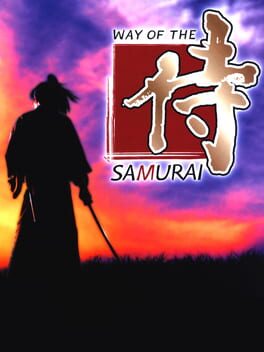ivysly
6 reviews liked by ivysly
This game is a damn mess, maybe the finest example of a “mixed” experience. It’s complex and beautiful and plays like a dream, but paradoxically loses its best traits the more invested you become. The open nature of the castle is rarely a benefit, with the shift in the mid-game pushing that flaw to its absolute limits. It’s also the easiest Castlevania that I’ve played by far, with only a few bosses providing friction in the experience. Worst of all, though? It ends so much lower than it begins, with a fatiguing slog through the castle climaxing with an overpowered weapon shredding the final boss into mince. Dracula didn’t stand a chance.
Scrutiny doesn’t do its airy complexion any favors. It’s a game best experienced almost offhandedly. If you’re like me, you’ve heard about this game for years through hushed tones that helped build its legacy far past what a ‘97 platformer should reasonably be expected to perform at. My advice to those people? Let it stay that way. It’s more interesting to wonder.
Scrutiny doesn’t do its airy complexion any favors. It’s a game best experienced almost offhandedly. If you’re like me, you’ve heard about this game for years through hushed tones that helped build its legacy far past what a ‘97 platformer should reasonably be expected to perform at. My advice to those people? Let it stay that way. It’s more interesting to wonder.
Killer7
2005
an extremely good attempt - much better than you'd expect at a glance - at recreating the mind games of fighting games without requiring that you grind your bones into dust against the controller to practice combos. it's a little opaque (would be nice if the game told me how to identify when the next turn happens instead of a steam guide) but is extremely rewarding nonetheless.
i understand why people keep throwing around the word "chess" when discussing this but i think for non-players this makes it sound like a game that lacks immediacy. you might spend a full 30 seconds planning for a "turn" that lasts 4 frames but those 4 frames can still be more rewarding than any single turn in normal chess would ever be, thanks to some chunky, bitcrushed sound effects. this kinda arrangement extends the satisfaction of a well-executed combo as long as possible and it rocks. game's funny too. nothing better than ending a turn, watching some completely innocuous shit happen for a whopping 6 frames, and then getting a message that just says "shit".
uh, play it with friends though, the playerbase is small enough that people don't always respect the "beginners only" lobby
i understand why people keep throwing around the word "chess" when discussing this but i think for non-players this makes it sound like a game that lacks immediacy. you might spend a full 30 seconds planning for a "turn" that lasts 4 frames but those 4 frames can still be more rewarding than any single turn in normal chess would ever be, thanks to some chunky, bitcrushed sound effects. this kinda arrangement extends the satisfaction of a well-executed combo as long as possible and it rocks. game's funny too. nothing better than ending a turn, watching some completely innocuous shit happen for a whopping 6 frames, and then getting a message that just says "shit".
uh, play it with friends though, the playerbase is small enough that people don't always respect the "beginners only" lobby
Way of the Samurai
2002
Way of the Samurai is a pack of red Marlboros for people who never smoked.
The age of the samurai dawns. Two families fighting over a single metal foundry. A desolate town suffers. The Meiji government looms over the valley, a force larger than any man ever will be. Time marches relentlessly. You are here to witness the end.
The game presents a delightful PlayStation 2 depiction of a samurai western. As you walk around the map scenes happen, most of them consequential, and if you are there you can affect the outcome. There is an illusion, that the story progresses whether you are there to witness it or not. Sometimes you save someone from being kidnapped, other times you take a baby on an evening stroll. Almost all of the fighting you will do are the consequences of these scenes. This makes them all meaningful, gives them a natural place in the plot. You never slaughter 200 faceless goons "because thats how video games are supposed to be". The restraint shown from the devs really pays off. Gameplay and plot form a cohesive narrative with elegance that even the most regarded creators of this field can only dream of. It's remarkable to find such an early example of this type of storytelling.
After selecting the difficulty the arcade sensibilities become imminent. There is no save point to go back to when you die. You have to start over from the beginning. You get some points for failure, that mostly unlock extras, but nothing that will get you closer to beating the game. For that you'll need stronger swords, things that are mostly available at the end of the story, and you don't get to keep them if you are defeated. Cowards may visit the blacksmith and have their sword delivered, if they have the funds for it. The bold must go for a clear and risk losing it all. This makes early runs very interesting, but becomes kind of meaningless as you start to amass a pretty big collection. Still, it manages to circumvent a lot of problems roguelikes face by simply discouraging suiciding. Rewards are at the finale. The game has more class than to shower you with garbage for a cheap dopamine kick.
The tutorials are ironically modern. Only one features gameplay, it's about how you press the circle button to speak to other characters. Rest of them get unlocked via the progression system, and are all just videos of advanced techniques. It reminds me of some fighting games, where your only resource for game mechanics are crusty YouTube tutorials. These videos the game gives you don't even have voice over, just subtitles. I kinda love this. Definitely a read the manual game.
One of the advanced moves you learn about early on are the off-balance techniques, the star of which is the push. While doing weak attacks you can push the other to break their defense. This feels realistic, as almost all the injuries I got from kendo were from people pushing like this. There was a girl there who started a few weeks after I did. I was assigned to spar with her. We crossed our swords and I looked into her blue eyes. She seemed like she was ready to kill me. She hit real hard too. I kinda loved her. Anyway the game puts a big emphasis on the push but its very situational. If you want to humble them I recommend kicking their shins.
It was such a joy to have this in my library. The design makes it excellent to pick up for an hour and leave fulfilled. A quaint samurai diorama behind my screen for me to behold. If you gonna stop playing video games for good, this might be the one exception you should keep.
The age of the samurai dawns. Two families fighting over a single metal foundry. A desolate town suffers. The Meiji government looms over the valley, a force larger than any man ever will be. Time marches relentlessly. You are here to witness the end.
The game presents a delightful PlayStation 2 depiction of a samurai western. As you walk around the map scenes happen, most of them consequential, and if you are there you can affect the outcome. There is an illusion, that the story progresses whether you are there to witness it or not. Sometimes you save someone from being kidnapped, other times you take a baby on an evening stroll. Almost all of the fighting you will do are the consequences of these scenes. This makes them all meaningful, gives them a natural place in the plot. You never slaughter 200 faceless goons "because thats how video games are supposed to be". The restraint shown from the devs really pays off. Gameplay and plot form a cohesive narrative with elegance that even the most regarded creators of this field can only dream of. It's remarkable to find such an early example of this type of storytelling.
After selecting the difficulty the arcade sensibilities become imminent. There is no save point to go back to when you die. You have to start over from the beginning. You get some points for failure, that mostly unlock extras, but nothing that will get you closer to beating the game. For that you'll need stronger swords, things that are mostly available at the end of the story, and you don't get to keep them if you are defeated. Cowards may visit the blacksmith and have their sword delivered, if they have the funds for it. The bold must go for a clear and risk losing it all. This makes early runs very interesting, but becomes kind of meaningless as you start to amass a pretty big collection. Still, it manages to circumvent a lot of problems roguelikes face by simply discouraging suiciding. Rewards are at the finale. The game has more class than to shower you with garbage for a cheap dopamine kick.
The tutorials are ironically modern. Only one features gameplay, it's about how you press the circle button to speak to other characters. Rest of them get unlocked via the progression system, and are all just videos of advanced techniques. It reminds me of some fighting games, where your only resource for game mechanics are crusty YouTube tutorials. These videos the game gives you don't even have voice over, just subtitles. I kinda love this. Definitely a read the manual game.
One of the advanced moves you learn about early on are the off-balance techniques, the star of which is the push. While doing weak attacks you can push the other to break their defense. This feels realistic, as almost all the injuries I got from kendo were from people pushing like this. There was a girl there who started a few weeks after I did. I was assigned to spar with her. We crossed our swords and I looked into her blue eyes. She seemed like she was ready to kill me. She hit real hard too. I kinda loved her. Anyway the game puts a big emphasis on the push but its very situational. If you want to humble them I recommend kicking their shins.
It was such a joy to have this in my library. The design makes it excellent to pick up for an hour and leave fulfilled. A quaint samurai diorama behind my screen for me to behold. If you gonna stop playing video games for good, this might be the one exception you should keep.



